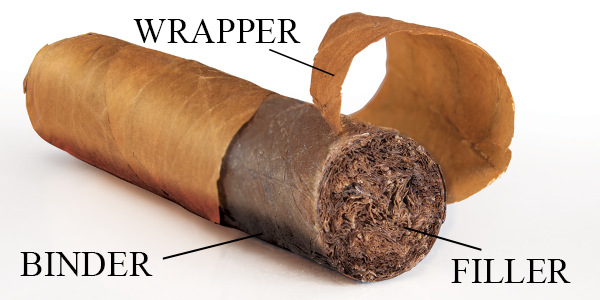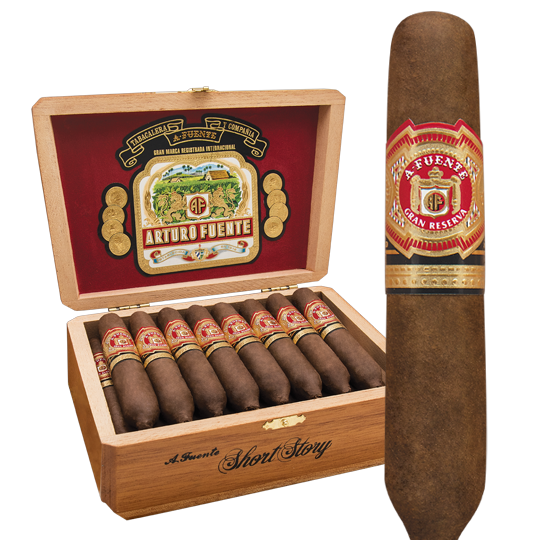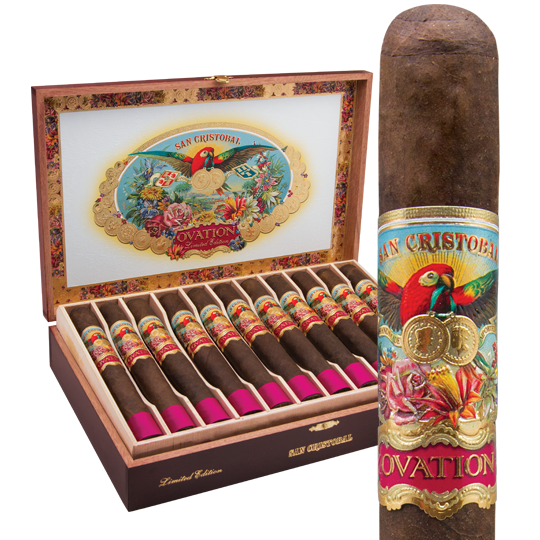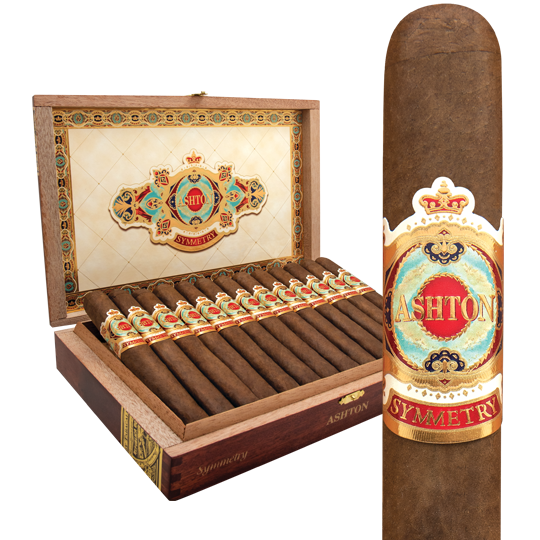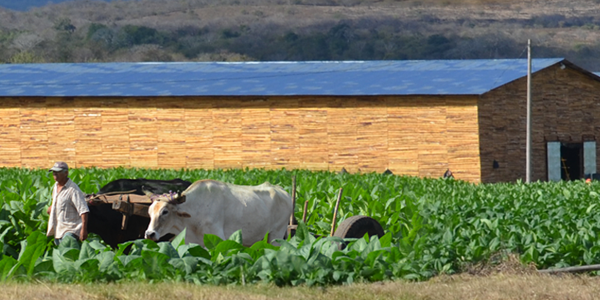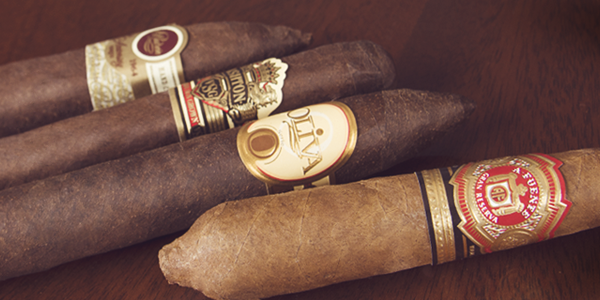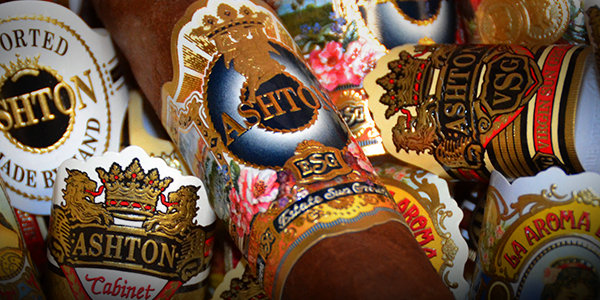Cigar Anatomy: The Many Parts of a Cigar
A premium handmade cigar is much more than a few leaves of tobacco rolled up in a cylindrical shape. Different tobaccos are combined in precise ratios to make up the parts of a cigar. We’re going to dissect the anatomy of a cigar and show you what it’s made of.
There are three main parts to a premium cigar: the filler, the binder, and the wrapper leaf. The combination of each of these parts is called the blend. The blend is like a recipe. The cigar-makers, or blenders, who create the cigars we smoke experiment with different tobaccos to perfect the recipe for every cigar they make. Most blends are handmade in multiple shapes and sizes. A cigar’s blend is adjusted for each size, so that an exact ratio between binder, filler, and wrapper tobaccos is followed. Let’s look at the key components of a cigar.
Wrapper
The wrapper is the outer leaf of a cigar that envelops the interior tobaccos. Besides a cigar’s band and its shape, the wrapper is the first thing you will notice when you look at a cigar. Because of this, cigar-makers are very particular about wrapper selection. The outer leaf must be pristine, smooth, and enticing in appearance as well as taste. Tobacco leaves with heavy veins, inconsistent color, or any cosmetic blemishes are often rejected as wrappers. Wrappers differ according to color, thickness, and texture and can determine up to 60% or more of the flavor you perceive in a cigar.
The wrapper receives the greatest amount of attention in the growing, fermentation, and construction of a premium cigar. The greatest number of hands handle a cigar’s wrapper leaf in its journey from the field to your humidor. Specialized workers at a cigar factory color-sort the cigars after they are rolled to ensure every cigar in a box displays a consistent shade of brown.
The two broadest categories for classifying wrappers are Natural (lighter in color) and Maduro (darker in color), although Maduro has more to do with how a wrapper leaf is processed than simply its color. To taste the difference between a Natural and a Maduro wrapper, smoke an Ashton Classic and an Ashton Aged Maduro. Each blend is hand-rolled from premium Dominican tobaccos. Maduro wrappers deliver darker and sweeter tasting notes while Natural varietals are creamy and nutty.
Besides labeling cigars as Natural or Maduro, wrappers are identified by their country of origin (where the tobacco is grown) and their seed varietal (the country or region where the seed originated). For example, an Ecuador Connecticut wrapper refers to a Connecticut-seed wrapper that is grown in Ecuador.
The most popular wrapper varietals include the following:
- Cameroon wrappers are grown in the African nations of Cameroon and the Central African Republic.
- Connecticut Broadleaf wrappers are harvested in the Connecticut River Valley. The plants are stalk cut and the leaves are nearly always processed as Maduro wrappers.
- Connecticut Shade wrappers are grown in the Connecticut River Valley under cheesecloth or nylon mesh to block out direct sunlight, giving the leaves a golden-blond color and a smooth and creamy flavor.
- Corojo is a Cuban-seed wrapper varietal primarily used in Central American nations today.
- Dominican wrappers are grown in the Dominican Republic and are very rare. Carlito Fuente blends Fuente Fuente Opus X and Ashton ESG with a Dominican wrapper.
- Ecuador Connecticut is a Connecticut-seed wrapper cultivated in Ecuador. As the acreage for tobacco farms in Connecticut shrinks every year, more and more cigar-makers rely on Connecticut-seed tobaccos grown in Ecuador.
- Ecuador Habano refers to Cuban-seed tobaccos grown in Ecuador.
- Ecuador Sumatra refers to Sumatra-seed tobaccos grown in Ecuador.
- Nicaraguan wrappers are common on a number of medium to full-bodied cigars. Padron and My Father produce several cigars with Nicaraguan wrappers.
- San Andrés wrappers are grown in the San Andrés Valley in the Mexican state of Veracruz. The region is known for its rich volcanic soils and for producing tobacco crops of superior quality.
If you find you really enjoy a particular blend, keep an eye out for other cigars that share a wrapper from the same seed varietal or region
Binder Tobacco
Just under the wrapper leaf resides the binder tobaccos. This is the part of the cigar that encases the filler tobaccos. The binder serves as a conduit for a smooth, consistent burn. The binder maintains a cigar’s structure and density. A lot of cigars are rolled with a single binder leaf, while others are crafted with two binder leaves. Cuban-legacy brand Punch Vintage is blended with a pair of Connecticut Broadleaf binder leaves, which enhance the cigar’s sweet and earthy profile. In some cases, wrapper leaves that do not meet aesthetic requirements are repurposed as binder leaves.
Filler Tobacco
Shielded beneath the binder, the filler tobaccos occupy the very center of a cigar. Filler tobaccos can greatly enhance the flavor a wrapper delivers and show off a cigar-maker’s talent for blending leaves from different fields, crop years, and regions. Distinct transitions of taste can amplify a cigar’s complexity, or reveal a more uniform profile. The density of a cigar’s core tobaccos can determine whether you experience a cooler, looser draw, or a slower-burning, firmer pull. It’s not unusual for a cigar-maker to experiment with many combinations of binder and filler tobaccos before arriving at the final blend.
Cap
At the head of a cigar (the end that you put in your mouth), is the cap. The cap consists of the same tobacco leaf as the wrapper. You can distinguish the cap by the faint line, or seam, around the head of the cigar where the end tapers (called the shoulder). In a standard shape like a Robusto, the taper is rounded and more gradual, while a Torpedo displays a much sharper, drastic taper. Highly skilled rollers can apply the cap with near perfect symmetry, and in some cases you will notice a triple-cap, which is a common Cuban-style of rolling, as opposed to a traditional double-cap.
You will need to cut the cap in order to smoke your cigar. As a general rule, you never want to cut the cigar below the shoulder. The cap helps to keep the wrapper intact as you smoke, and it’s always recommended that you cut your cigar above the seam that outlines the cap. On a typical Robusto or Toro, it’s common to cut roughly the circumference of a dime from the cap when you’re using a standard guillotine or straight cutter.
Foot
The end of the cigar that you light is called the foot. It’s important to toast the entire foot of your cigar to ensure an even burn and prevent one side of the cigar from burning unevenly or canoeing. Use a wide flame when lighting standard shapes like a Robusto, Toro, or Churchill. Take your time and examine the cigar’s foot after it’s lit to make sure the burn encompasses the entire circumference. If you gently blow on the foot, you should observe an even red-orange cherry at the end.
Certain Figurado shapes, like an Arturo Fuente Hemingway Short Story, feature a closed foot where the end is tapered to a point. These shapes take less time to ignite as the opening at the foot is much smaller. The initial draws on a closed-foot cigar often reflect a slightly tighter and slower draw. The first few minutes of your cigar possess more of the wrapper’s flavor as a result.
Cigar Band
Cigar bands evolved in the 1800s as means to identify Cuban cigars imported to Europe. Today, cigar bands adorn nearly every brand you can think of, although there are also a number of bundles and cigar seconds that forego the convention for reasons of cost-effectiveness.
A cigar band communicates brand identity, tradition, and serves to capture your attention on a store shelf or in an image online. We’re frequently drawn to one cigar over another based on our impressions of the band. Vivid cigar band imagery includes everything from colorful landscapes to crests and intricate calligraphic fonts. Appealing and highly detailed cigar bands can enhance our perception of a cigar, call attention to the wrapper leaf, and influence our purchasing decisions.
San Cristobal Ovation and Ashton Symmetry are wrapped in bands with beautiful visual details. Some connoisseurs collect cigar bands. Whether or not you choose to start a band collection of your own, snap a pic on your smartphone of your favorite cigars with the band intact. Keeping track of the cigars you want to revisit in the future is convenient and fun when you remember what the band looked like.
Total Recall
Now that you’ve got a firm grasp on cigar anatomy, consider how the differences in wrapper, region, and construction impact the brands you prefer. Seek out new cigars to try that have similar characteristics to the blends you already know you like.

